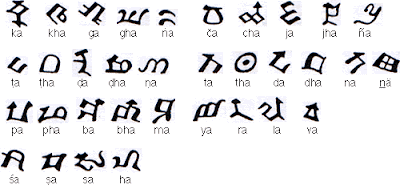
Decide for yourself how the two scripts are very close. Now what were Vedic Gods doing in the treaty between the
Hittites and the
Mitanni ? Please read on the article below. Phoenicia was part of northen Canaan, and todays coast of modern of Syria and Lebanon. Hittites were in todays western Antolia, which is part of modern Turkey. And Mittinnis were part of the south eastern part of Antolia.
Adapted from: http://en.wikipedia.org/wiki/Indo-Aryan_superstrate_in_Mitanni
Some theonyms, proper names and other terminology of the Mitanni exhibit an Indo-Aryan superstrate, suggesting that an Indo-Aryan elite imposed itself over the Hurrian population in the course of the Indo-Aryan expansion.
In a treaty between the Hittites and the Mitanni (between Suppiluliuma and Matiwaza, ca. 1380 BC), the deities Mitra, Varuna, Indra, and Nasatya (Ashvins) are invoked. Kikkuli's horse training text includes technical terms such as aika (eka, one), tera (tri, three), panza (pancha, five), satta (sapta, seven), na (nava, nine), vartana (vartana, round). The numeral aika "one" is of particular importance because it places the superstrate in the vicinity of Indo-Aryan proper as opposed to Indo-Iranian in general.
Another text has babru (babhru, brown), parita (palita, grey), and pinkara (pingala, red). Their chief festival was the celebration of the solstice (vishuva) which was common in most cultures in the ancient world. The Mitanni warriors were called marya, the term for warrior in Sanskrit as well.
Sanskritic interpretations of Mitanni royal names render Shuttarna as Sutarna ("good sun"), Baratarna as Paratarna ("great sun"), Parsatatar as Parashukshatra ("ruler with axe"), Saustatar as Saukshatra ("son of Sukshatra, the good ruler"), Artatama as "most righteous", Tushratta as Dasharatha ("having ten chariots"?), and, finally, Mattivaza as Mativaja ("whose wealth is prayer"). Some scholars believe that not only the kings had Indo-Aryan names; a large number of other names resembling Sanskrit have been unearthed in records from the area.
Archaeologists have attested a striking parallel in the spread to Syria of a distinct pottery type associated with what they call the Kura-Araxes culture, however the dates they usually assign for this are somewhat earlier than the Mitanni are thought to have first arrived.




